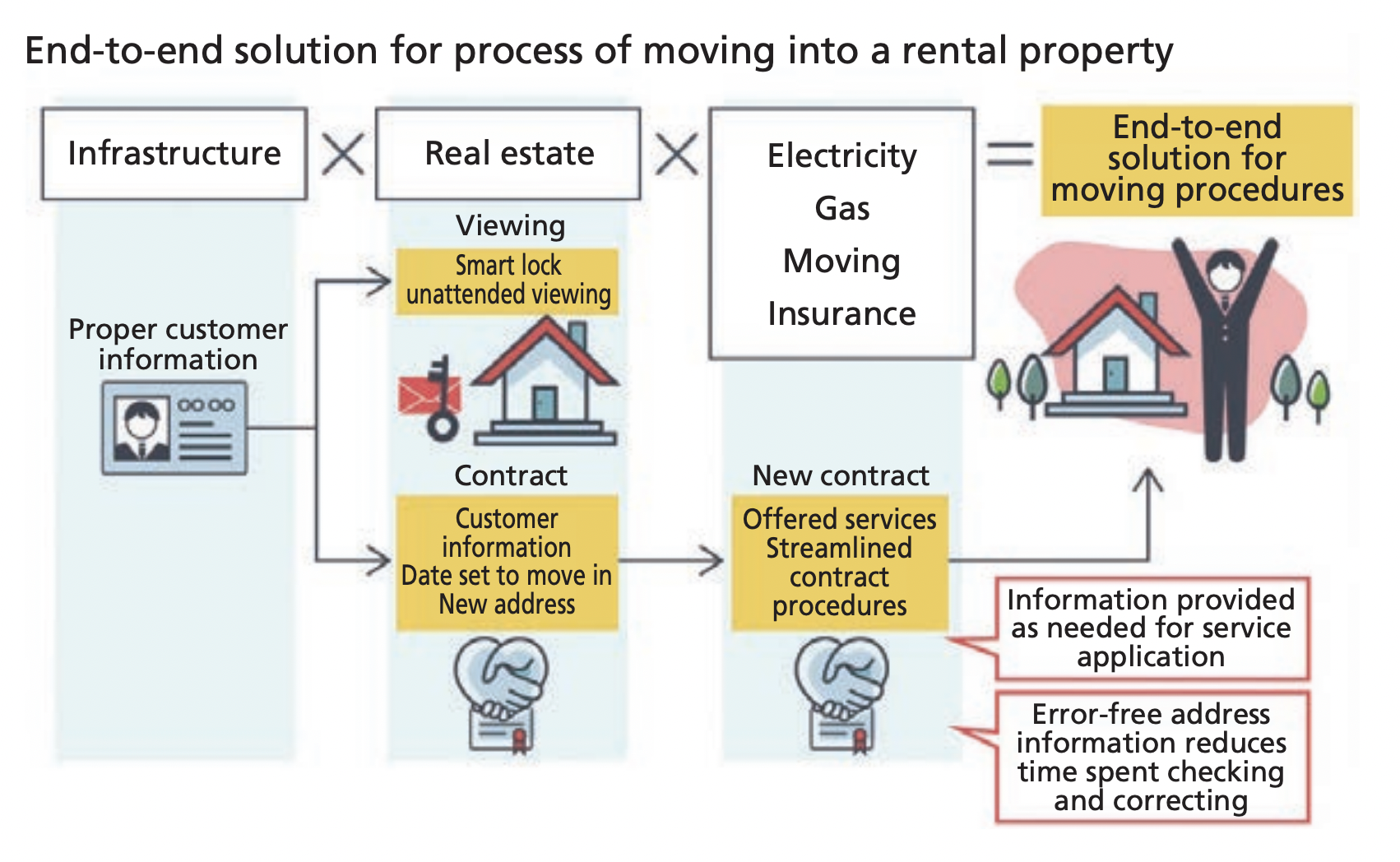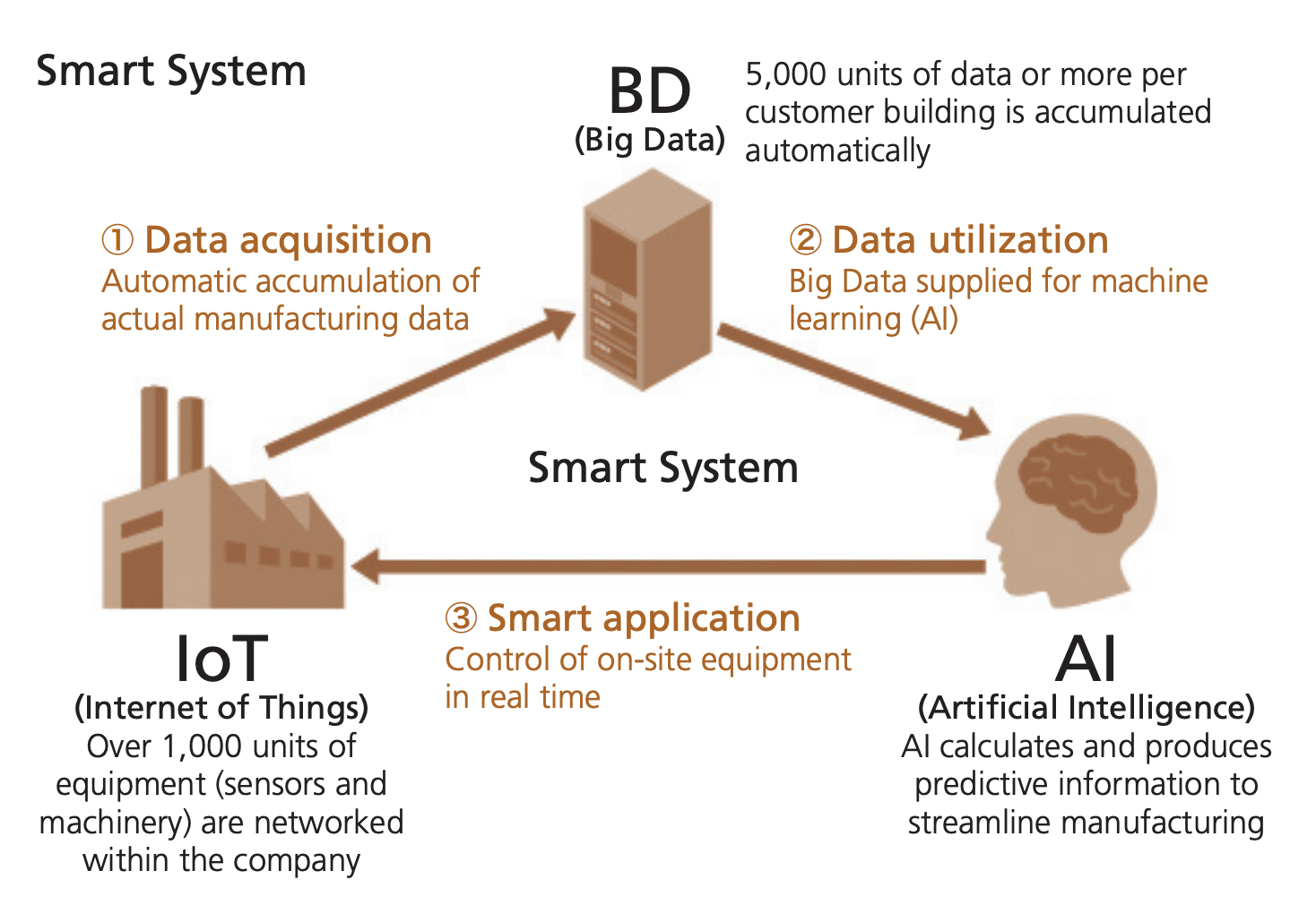Osaka-based Sekisui House (SKHSY & 1928:JP), a large developer with a vast portfolio of managed rental apartments under their sub-brand Shamaison, began a trial program in March, 2021 allowing renters to view, submit leasing applications, navigate through the contracting process and set up lifeline utilities with a proprietary built blockchain.
The trial program, originally announced June of 2020, aims to create a one-stop shop for clients that would make the leasing leg-work more efficient for tenants.
Sekisui explained in it's 2021 Sustainability Report that “Blockchain is ideally suited for ensuring the security of information among multiple enterprises when sharing data such as a transaction history among multiple computers connected to the internet.”

Graphic provided from Seksui House 2021 Sustainability Report Pg. 60
Sekisui’s blockchain initiative originally began development in April of 2017 and two years later, through a partnership with KDDI and Hitachi, began verifying the system to simplify procedures for contracting essential services, including utilities and fire and earthquake insurance.
At the same time in September, 2019, trials began on testing a smart-lock system for potential tenants to view properties more efficiently without a real estate agent as an intermediary.
“The first stage of this initiative verified the business model and effectiveness of an end-to-end solution for the real estate lease agreement process.” Sekisui’s Sustainability Report further explains.
In April of 2020, Sekisui House became a founding member of the NEXCHAIN Consortium, an inter-enterprise sharing platform. By June of 2020, the recruiting of new member companies began, increasing membership to 33 participating firms by January, 2021.
According to Sekisui, once more companies were on board, “The second stage verified how the sharing of data across a group of companies involved in the sector could simplify leasing procedures up to the point of taking up occupancy, as the same [tenant] personal identification information is required by companies offering products and services separately, whether setting up a new contract or a person changing addresses, initiating, suspending, or canceling a service, from fire and earthquake insurance to utilities.”
Society 5.0
On March 19th, 2017, then Prime Minister Shinzo Abe delivered a speech in Hannover, Germany, outlining Japan’s commitment to what it termed as Society 5.0; the initiative to build a “super-smart” society that would further evolve the technology produced in the industrial and information eras.
Society 5.0 is summarized by saying that big data, generated by an increased Internet-of-Things (IoT) permeance paired with efficient sharing mechanisms like blockchain technology combined with mature artificial intelligence, will improve the capacity and capability of automation across all facets of society.

Graphic provided from Sekisui House Sustainability Report Pg. 63
Japan, more than any other nation, has good reason to fully lean into the Society 5.0 concept. Prior to, during and after the pandemic, Japan still has the oldest and fastest diminishing population. By 2050, it is estimated that more than 50 percent of Japanese will be above the age of 65.
Furthermore, Japan has made clear that increasing reliance on automation to increase labor productivity will take precedence over more immigration to make up for the demographic shortfall.
Where the Society 5.0 initiative is taking aim at are economic segments including but not limited to finance, health care, logistics and artificial intelligence.
This makes the NEXCHAIN Consortium’s work all the more important in present day.
Where Sekisui House is looking to streamline the residential leasing processes with Shamaison, further evolution of blockchain applications into managing these properties with better preventative maintenance isn’t too far outside the realm of possibility.
Imagine this fictional scenario; sensors monitoring water pipe deterioration alerts the building manager when they need replacing.
Currently, the tenant reports the issue upon discovering water leaking making the process a reactionary one.
The property manager then intermediates between the building manager and the tenant to survey damage, estimate cost of repairs, sign off on said estimate and organize the actual execution of repairs with the tenant effected.
In the worst case scenario, a massive leak causes widespread damage, more non-water related repairs, insurance claims and possibly occupancy issues.
On the other hand, if sensors that monitored pipe deterioration were connected to the internet (IoT), an impending problem could be fixed with preventative, just-in-time precision with minimal effect on the tenants.
A repair history ledger powered by blockchain technology immutably records the details of when the original alert went out, specific part numbers for the new piping and fittings used, what company was called to execute the repair, what specific building management employee oversaw the repairs and of course the maintenance date. Since most of this process is automated, it would eliminate most of the intermediary bureacracy needed today.
Water leakeage management is but one use-case example but other applications can be easily imagined relating to electrical, gas, waterproofing and structural upgrades.
One of the largest risks when buying a second-hand investment property is paper based maintenance records that are easily lost, often creating huge gaps in actual repair history.
IoT sensors paired with a blockchain ledger could eliminate loss risk as the data is recorded in an unalterable, digital only format with multiple copies in different locations concurrently updating themselves.
In Japan specifically, viewing the current state of tenanted units within a building is impossible pre and post purchase. Buyers have to make a decision based on the quality of the paperwork and viewing the building from only the outside. Often maintenance records are not detailed enough to provide complete peace of mind for the buyer. Leasing contracts themselves can be lost, increasing buyer risk which in turns opens sellers up to price reduction negotiations.
In theory, blockchain ledgers combined with other smart services can theoretically solve most of these issues.
Sekisui outlines further on page 60 of the Sustainability Report “By promoting this [blockchain] platform, Sekisui House aims to create a new industry standard for procedures for moving into rental properties, and create services with NEXCHAIN that will significantly enhance participation in society in light of emerging issues in the new normal times to come.”
Further Reading:
Blockchain Explained (Investopedia; Updated June 1st, 2021)
What is the Internet-of-Things (ZDNet; February 3rd, 2020)
Artificial Intelligence vs. Machine Learning: What’s the Difference? (Northeastern University; May 6th, 2020)







